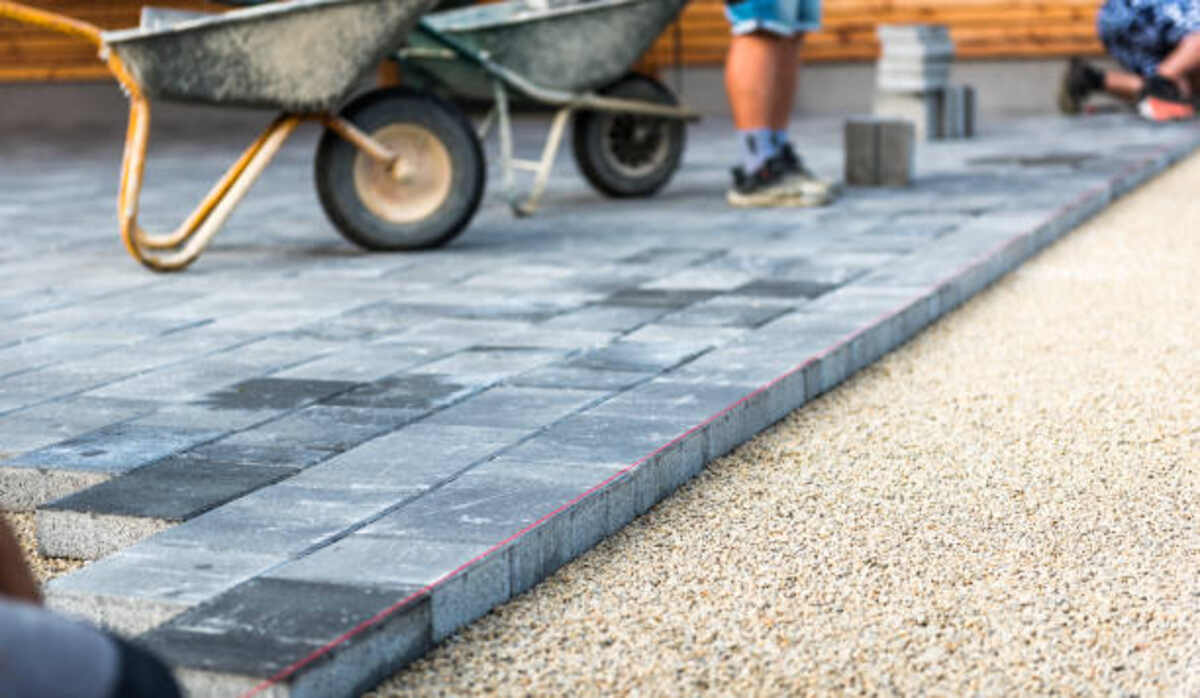Paver driveways provide design flexibility with their vast array of shapes, sizes, textures, and colors that enable homeowners to create an original aesthetic that matches their home perfectly. Find the best Asphalt Paving in Berkeley.
Paver driveways require much less upkeep and maintenance than their concrete counterparts, only needing occasional sweeping and hose rinsing for any weeds or stains to appear.
Durability
Concrete and pavers are both strong materials capable of withstanding vehicle weight without cracking or deteriorating, although both require periodic repairs to keep them in good condition. When installing driveway pavers using the appropriate base material and installation techniques, durability increases significantly; drainage planning must also be considered in order to minimize water damage and erosion over time.
Additionally, driveway pavers’ interlocking design prevents them from shifting or settling over time, providing a more stable surface that can support cars and trucks for an extended period.
Brick pavers made of molded clay tend to be more resilient than concrete pavers; however, they still can be damaged by vehicles and harsh weather conditions. On average, concrete pavers tend to last between 25 and 50 years, with their 8,000 pounds per square inch strength rating being enough to support most vehicle weights.
Repairing a damaged paver driveway is simple and cost-effective. While traditional materials make large-area fixes more complex and unattractive than necessary, fixing pavers is as straightforward as pulling up affected tiles and replacing them with new ones, making this an attractive and economical solution for homeowners.
Aesthetics
Driveway pavers add texture and vibrancy to the exterior of your home, adding visual interest that adds distinction. While concrete and asphalt driveways may provide limited customization opportunities for you and architectural style preferences, pavers allow more freedom for customization that fits with both personal taste and architectural styles. Your driveway serves as the first impression for guests visiting your property, so why settle for something plain when investing in a paver driveway? It will only increase its curb appeal over time.
Paver designs range from brick styles to natural stone textures in various shapes and sizes. Paver laying patterns also add distinctive aesthetics that can add character to your driveway project; classic runs on running bond pavers create a classic aesthetic, while herringbone and basket weave arrangements offer texture for larger areas. Circular paver kits can also be used as accent pieces to draw people in, leading them to your entranceway.
A paver driveway can feature an eye-catching contrast border to complement the color scheme and entrance design of your property, drawing attention from visitors entering through it. Thanks to a range of driveway paver options, there’s also plenty of flexibility when arranging and placing each stone, creating the opportunity for designing an original paved driveway to suit any architecture imaginable – no more boring bland paver driveways here, from stone shapes with unique textures or even embellishments of textured patterns embellishments your options are virtually limitless for creating stunning driveway designs!
Maintenance
Paver driveways, patios, and walkways require minimal upkeep to remain looking their best. While concrete drives may need resealing every two years, pavers only require occasional hose-downs and sweeps.
Pavers are also easy to repair should they become damaged. Unlike concrete, which can crack and stain over time, pavers can be pulled up to repair any damage before being reinstalled, which can come in particularly handy when an object such as a car or tree root has caused harm.
Maintaining a brick paver driveway requires only regular sweeping with a push or power broom, using a commercial or homemade cleaner to scrub at any stains, taking care to avoid scratching paving stones, and digging up joint sand before thoroughly rinsing off with water using a hose and sprayer nozzle.
Sweeping helps prevent weeds from sprouting between pavers, as these often find refuge in dirt left between them. Regular use of weed killer during spring can prevent their take-hold; additionally, quality paver sealant should be applied every three years to help protect its surface from staining.
Installation
When designing a paver driveway, choosing the appropriate material is of the utmost importance. Multiple choices are available, such as concrete pavers, clay bricks, and natural stone pavers, with costs that depend on personal taste and budget considerations. Also, be sure to contact local utility companies prior to starting any work so as to prevent hitting any pipes or cables while installing your driveway.
After performing an underground utility check and excavating the site, contractors will add a layer of the base material. Its thickness depends on climate conditions and the type of soil present in the region; this layer serves as the foundation for your pavers, making them more durable and resistant to erosion.
Once the base is laid out, professionals will begin installing pavers. Starting with full-sized pieces and gradually cutting smaller ones as gaps appear. While working, they will comb over their surfaces and clean them using a plate compactor to tamp down stones.
Once the pavers are installed, they will be filled in with a layer of sand to keep their stones from shifting during ground freeze-thaw cycles. A contractor will sweep and use a plate compactor to tamp down any remaining sand before compacting it further.

